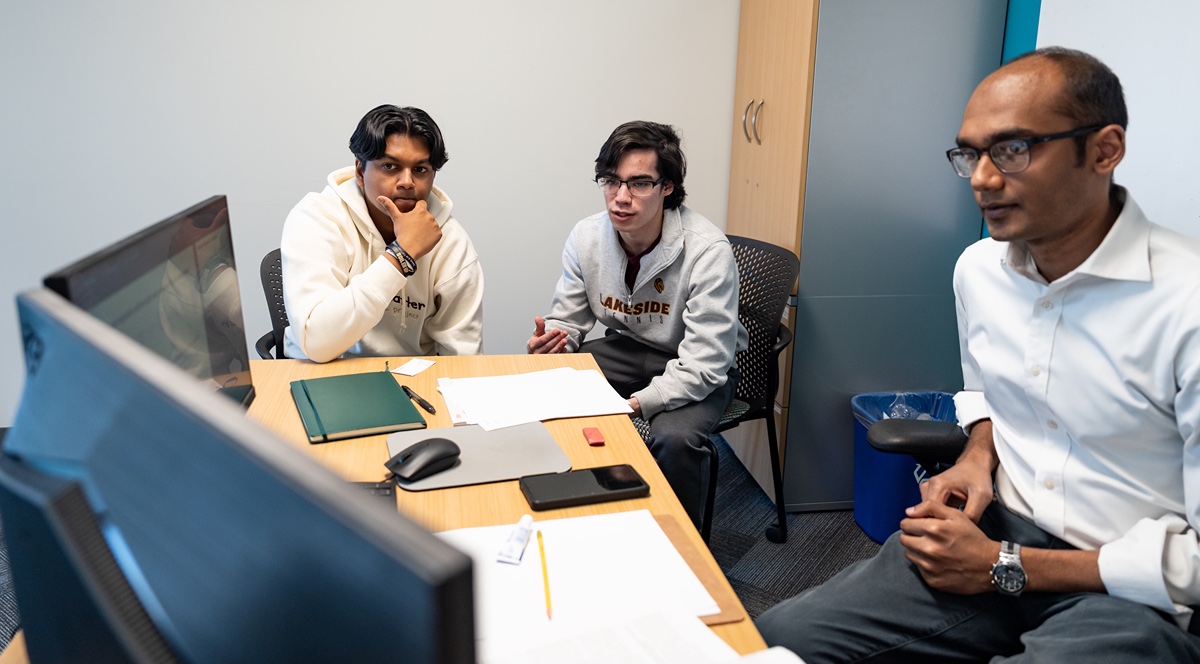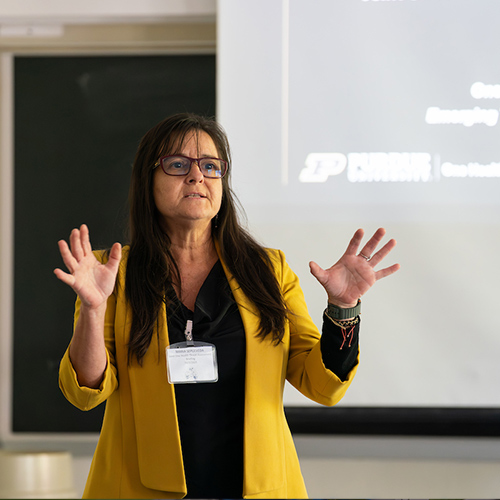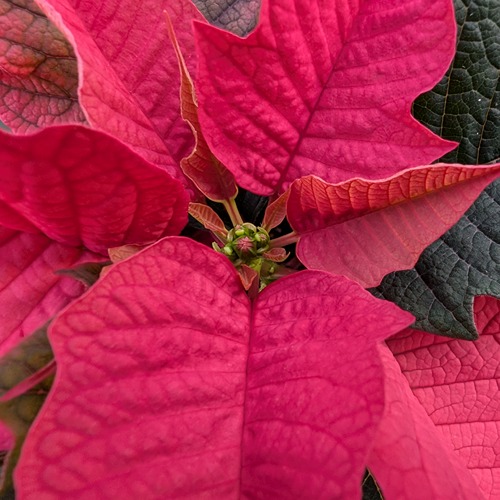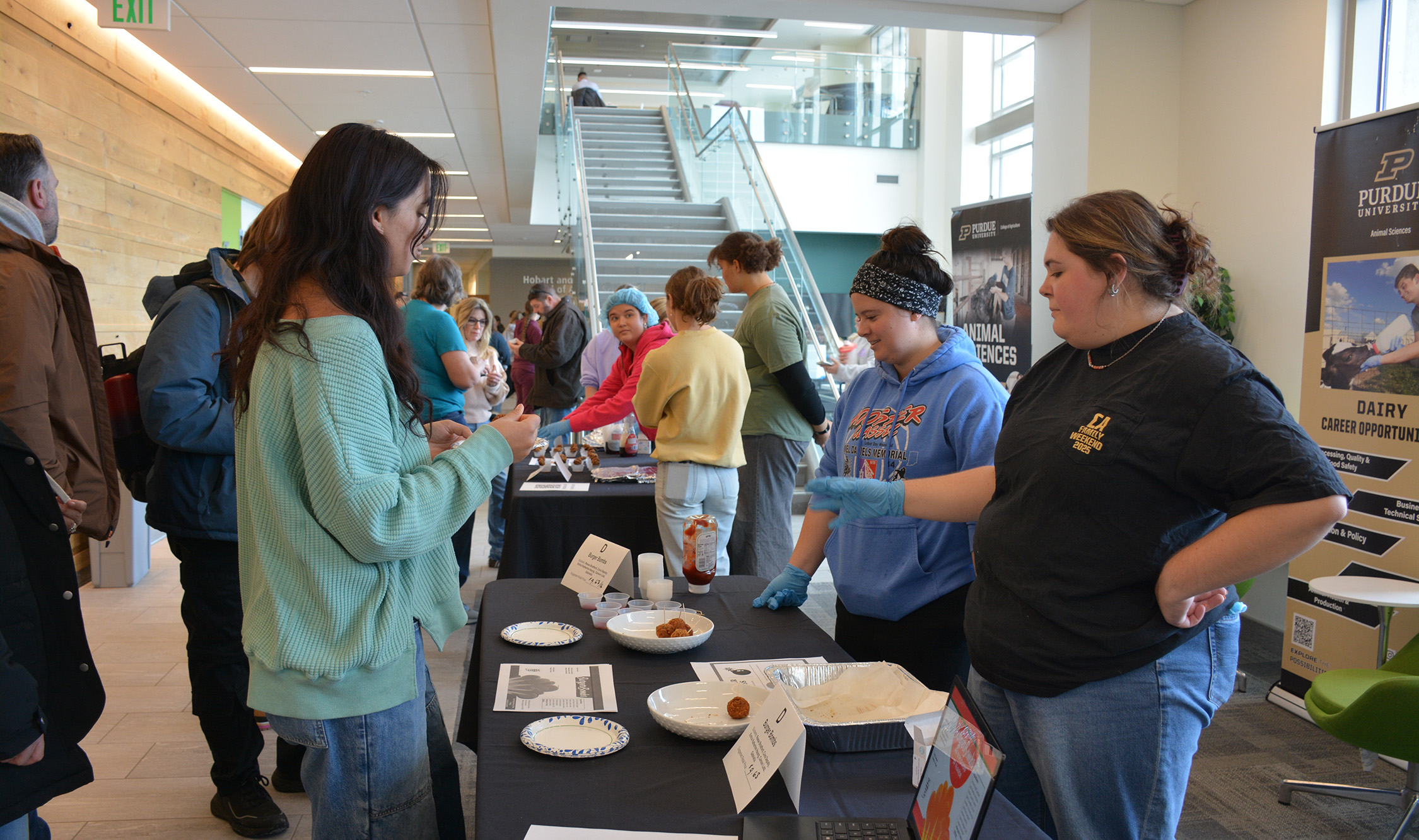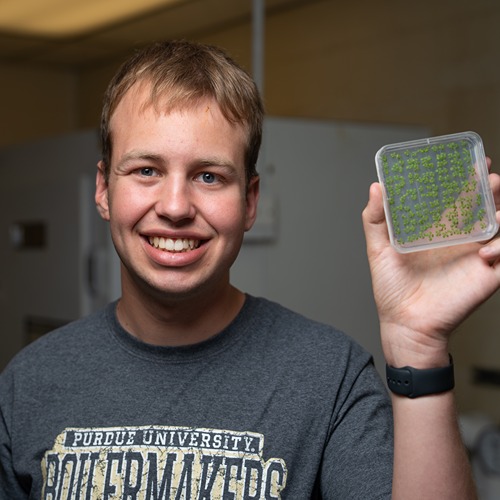More ideas for new pharmaceuticals, faster
Purdue’s Karthik Sankaranarayanan wins grant for algorithm to help develop new drugs
Enzymes – proteins that speed chemical reactions – are commonly used in the pharmaceutical industry. But figuring out which enzymes might be useful can be a slow process. Assistant professor of agricultural and biological engineering Karthik Sankaranarayanan has developed an algorithm for speeding up the process. Recently his work earned him an $80,000 grant from the American Chemical Society.
“What this algorithm will do is give humans a set of ideas to consider,” Sankaranarayanan says. “It will attempt to compliment human expertise on how these drugs are designed.”
Sankaranarayanan is one of eight researchers from the US, Canada, and Europe awarded the grant from the American Chemical Society Green Chemistry Institute Pharmaceutical Roundtable. These grants support research on green chemistry in pharmaceutical discovery, development and manufacturing.
The yearlong grant pairs Sankaranarayanan’s research program with similar research groups at the pharmaceutical companies Merck and Pfizer. This gives him the opportunity to apply his research to real-world goals in a more immediate way.
Typically, the process of testing enzymes as catalysts in pharmaceutical manufacturing means researchers sitting around a table and brainstorming, Sankaranarayanan explains. But scientists’ approaches are limited by their own experiences; people will naturally be biased towards what they’re already familiar with through the happenstance of their circumstances or training. The algorithm, on the other hand, is trained on a corpus of commonly used reactions in nature and the chemical manufacturing industry, and is not biased towards one approach or another.
“It gives ideas humans may or may not have thought of,” Sankaranarayanan says.
Sankaranarayanan and his students meet with the team at the pharmaceutical companies about once a month. They give feedback based on what seems promising for the work they’re currently doing.
To Sankaranarayanan, if the algorithm could match or exceed humans in the number of ideas generated, that would be “a great achievement.” And there’s no reason the algorithm’s usefulness should be limited to pharmaceuticals. It could be applied to the range of chemical products – food, fragrances, biofuels, even defense applications. Sankaranarayanan expects to expand to such areas within the next five years. Further down the road, in the next 15 or 20 years, he imagines the algorithm being integrated with robots to automatically test suggested enzymes. The results – ‘yes, this is promising,’ or ‘no, this is unlikely to work in an experimental setting’ – would be reported to researchers. Humans wouldn’t need to be involved with this loop at all, and would be free to focus on the more creative tasks of coming up with new drug molecules.
When Sankaranarayanan heard he’d been awarded the grant, he was particularly excited about what this meant for his students. It was his students who developed the initial algorithm – there is one graduate student and three undergraduates on the grant application – and now they get to see their research applied in the non-academic world. Plus, they’ll get an inside look at how pharmaceutical development works and make valuable contacts that could help them in their future careers.
Purdue students are very comfortable stepping outside their comfort zones,” he says. “They have the strength to come outside their fields and work on this problem that’s at the interface of so many disciplines.”
This research is a part of Purdue’s presidential One Health initiative, which involves research at the intersection of human, animal and plant health and well-being.
